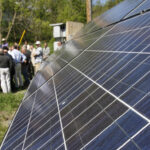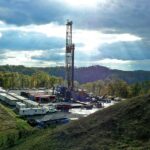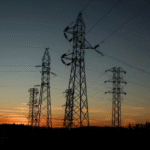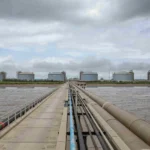Energy News Beat
When I bought my first home — a 50-year-old fixer-upper in a small town — I couldn’t run my hair dryer and the microwave at the same time without tripping a circuit. I had to get creative with how I used electricity; such electric use was unheard of when the house was built, let alone using a smart home system or charging an electric vehicle.
Changes in how Americans use energy are occurring even faster than we expected, for reasons we may not have even seen coming, and our electric grid is woefully unprepared to handle it. Electricity consumption has more than doubled since my first home was built, and according to a new report from Grid Strategies, it’s expected to grow 4.7% over the next five years – an increase that’s nearly double what was projected just last year.
The energy generated by renewable sources is an important part of meeting this future electricity demand cheaply. However, there are over 1,350 GW of generation waiting in U.S. interconnection queues, more than 95% of which are zero-carbon energy. The core problem with connecting these sources to the grid is a lack of transmission.
A complex network of transmission lines power our daily lives, but many of the existing lines — constructed in the 1950s and 1960s — have reached or exceeded their lifespan. To make matters more complicated, our current electric grid looks more like a patchwork quilt than a cohesive system that can efficiently transfer energy from where it’s generated to where it’s used. In order to ensure the electricity reliability that Americans have come to expect, it’s crucial that FERC and Congress put the right policies in place to accelerate buildout of high-capacity transmission lines.
More recently, headlines have focused on states’ and cities’ all-electric mandates and electric car incentives as a catalyst for growing energy consumption, but that’s just the tip of the iceberg. The U.S. is enjoying a manufacturing boom that will require significantly more energy, as well as the infrastructure to deliver it. Energy consumption from U.S. data centers is expected to double from 17 GW in 2022 to 35 GW by 2030. Furthermore, use of artificial intelligence has increased, which requires a sizable quantity of power to operate — training a single model can consume more electricity than 100 homes use in an entire year.
In parallel with increased consumption, the energy mix has shifted since the start of the century. When it comes to changes in how our energy is generated, we often think of state mandates — and this is understandable. Renewable development policy first began with a 1970’s federal law, through which progressive state requirements, called renewable portfolio standards, were levied on their in-state utilities to develop renewable resources. Relatedly, transmission development was characterized around 2011 as being for reliability, economic, or public policy purposes — it was envisioned that a line might be for one purpose or another, but that the streams would not always meet.
Fast forward a decade and the landscape is dramatically different. While state mandates continue to stimulate renewable development, they are not necessarily the dominant force. Since 2014, energy customers have voluntarily procured more than 71 GW of clean energy — with nearly 17 GW purchased last year alone. Even without the obligation of state mandates, utilities are setting their own clean energy goals, such as Xcel in North Dakota, Entergy in Arkansas, and PacifiCorp in Utah.
In its current state, the U.S. electric grid will not be able to keep up with Americans’ increasing energy consumption. However, with so many GW of renewable generation sources waiting to be connected to the grid, the solution is simple: transmission must be expanded to move this energy from where it’s created to where it’s consumed.
There are a number of policies that, if enacted, would help clear the current backlog and accelerate transmission buildout. FERC should finalize a strong regional transmission planning and cost allocation rule that requires a long-term look at the changing resource mix and load, specifies economic and reliability benefits, and creates a backstop cost allocation method. Moreover, Congress could create a transmission tax credit or reform current siting and permitting guidelines to give the federal government primary jurisdiction over regionally significant power lines.
Simply put, the needs of the grid are changing, and our energy infrastructure must change with them. If we fall any further behind, we risk leaving households and businesses across the country in the dark. America needs a grid to power America.
ENB Top News
ENB
Energy Dashboard
ENB Podcast
ENB Substack
The post The Needs of the Grid Are Changing — Our Infrastructure Must Change With Them appeared first on Energy News Beat.








